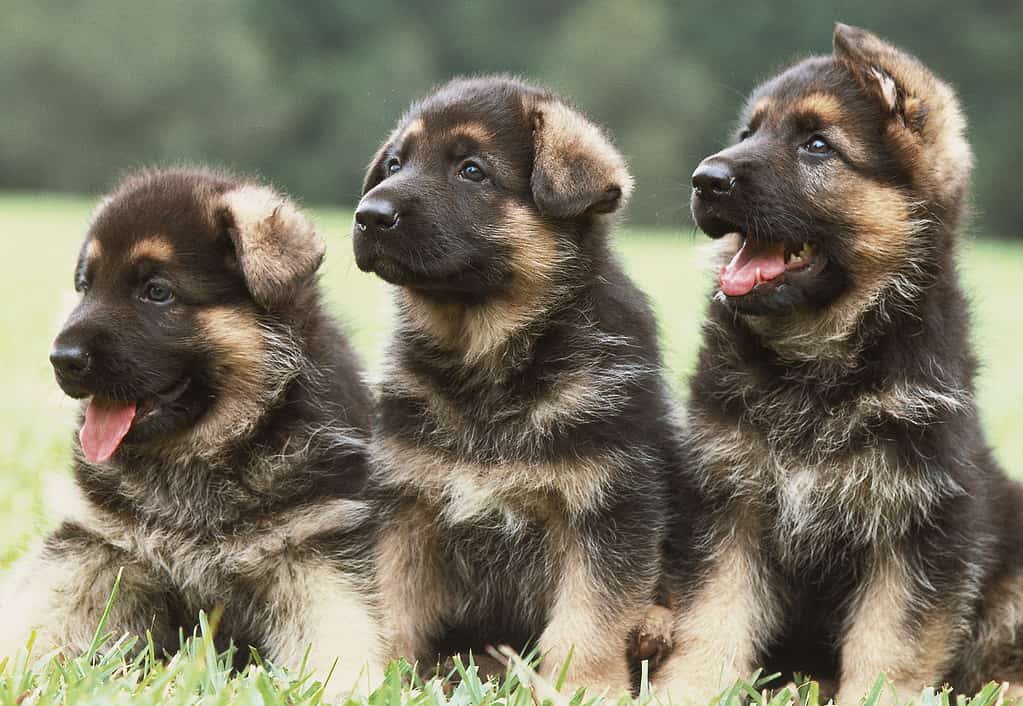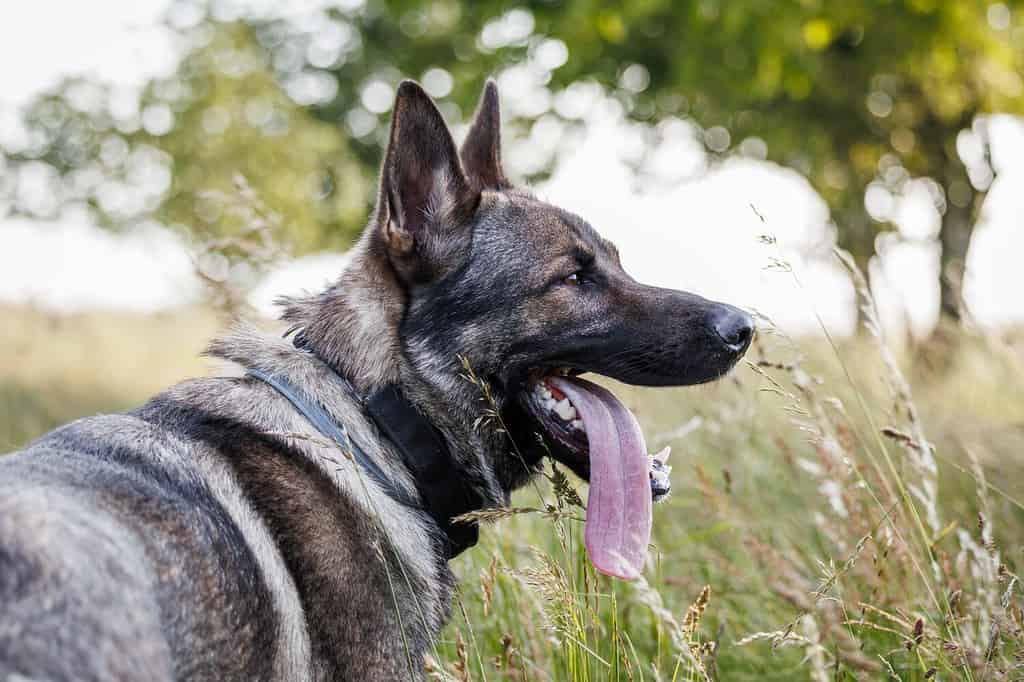King Shepherds are an “underdevelopment” breed that was bred using mostly German Shepherds. While some other breeds are mixed in, King Shepherds tend to take after their German Shepherd ancestors the most. Therefore, King Shepherd training is a lot like training a German Sheperd.
These dogs get exceptionally large, so careful training and socialization are absolutely required. Otherwise, these dogs can be difficult to control and may even be dangerous in some cases.
Luckily, these dogs are often bred with trainability in mind. Therefore, they’re often easy to train and pretty obedient. While you still need to put some effort into training and follow a training timeline, you’ll typically find it easier than most other dog breeds.
1. Temperament Matters
King Shepherds are a newer breed. Therefore, they tend to vary quite a bit. Plus, there is no specific temperament or appearance these dogs are required to have. Technically, anyone can call their dogs “King Shepherds,” and there is no way to prove them otherwise.
Therefore, it is vital that you consider the temperament of your particular King Shepherd when training. Some are very assertive and strong-willed, which can make training more challenging. They may need extra training and very consistent rules.
Others may be “softer.” They may be more adaptive to training and less likely to push back. However, some dogs with this temperament may also be shy or skittish. Therefore, you’ll have to focus even more on socialization.
Neither of these temperaments is necessarily easier to train. However, they each have their strengths and weaknesses that you need to consider.
2. Start Socilaization Early

These six-week-old puppies should be beginning socialization, even at this early age.
©photopix/iStock via Getty Images
King Shepherds often have protective instincts, and some can be on the shyer side. Therefore, it’s important to start socialization early.
Socialization simply involves introducing your dog to as many situations as possible. You should take your puppy around to meet new people and animals. Puppies are like sponges, making socializing much easier than older dogs.
Puppy classes can be very helpful for socialization, as well. These classes provide socialization and can help introduce training concepts, as well.
In the early days, you should focus on socializing your puppy. While training is also important, socialization will have a bigger impact at this age.
3. Over-practice the Basics
It’s often exciting for your dog to achieve the basic commands and move on to more advanced cues. However, it’s important that you don’t move on too quickly. Usually, the basic commands are the most usable in the real world. Commands like “sit” and “stay” also make your dog much more controllable than they might otherwise.
You should over-practice the basics. In other words, you should practice these cues even after your dog has “mastered” them. Try practicing in different settings with tons of distractions, for instance.
Rarely will you need your dog to “sit” in a place free from distractions.
4. Begin Leash Training Right Away

Your King Shepherd will grow a lot in the first two years. You’ll have to continuously upgrade the size of your leash and harness.
©Dolores M. Harvey/Shutterstock.com
These dogs get extremely large. Therefore, it isn’t hard for them to overpower their owners on a leash and be massive pullers. Because these dogs tend to be more high-strung, they also tend to pull quite a bit unless this tendency is corrected. It’s important to purchase a leash and harness right away and start using them.
The beginning of leash training simply involves getting your dog used to the leash and harness. However, over time, you should start focusing on teaching “heel” and encouraging loose-leash walking. Your puppy class should cover this, but many dogs need much practice. Most dogs will take months (if not years) to master walking on a leash.
5. Provide Plenty of Exercise
King Shepherds are often pretty easy to train. However, they have shorter attention spans if they aren’t properly exercised. They require quite a bit of exercise each day, though the exact amount will depend on their age and temperament. Some may need as much as two hours of moderate to vigorous exercise daily.
You should aim to get some exercise in before training sessions. Exercise helps your dog expel pent-up energy and can improve their attention span.
6. Don’t Forget Mental Stimulation

Mental stimulation is incredibly important for King Shepherds of all ages. We highly recommend investing in quality puzzle toys and learning a few dog games to teach your canine.
©encierro/Shutterstock.com
These canines often need a bit of mental stimulation, too. Games and puzzle toys can help increase their attention span and executive functioning in a fun way, multiplying the effectiveness of obedience training. Your dog is only as obedient as their attention span and self-control allow.
Training can help keep your dog’s mind active and provide mental stimulation. However, you shouldn’t only rely on training to keep your dog’s mind challenged.
7. Consistency is Key
In the end, your consistency will greatly affect how effective your training is. While you may think that letting your dog get off a few times is nice, this only serves to confuse your King Shepherd. They’ll have difficulty figuring out why something is allowed on some occasions and not others. “Just this time” isn’t something that dogs can comprehend.
It’s important that everyone in your household understands and enforces these boundaries, too. If your dog isn’t allowed on the couch, that means that no one should allow them on the couch.
Ready to discover the top 10 cutest dog breeds in the entire world?
How about the fastest dogs, the largest dogs and those that are -- quite frankly -- just the kindest dogs on the planet? Each day, AZ Animals sends out lists just like this to our thousands of email subscribers. And the best part? It's FREE. Join today by entering your email below.
Thank you for reading! Have some feedback for us? Contact the AZ Animals editorial team.








